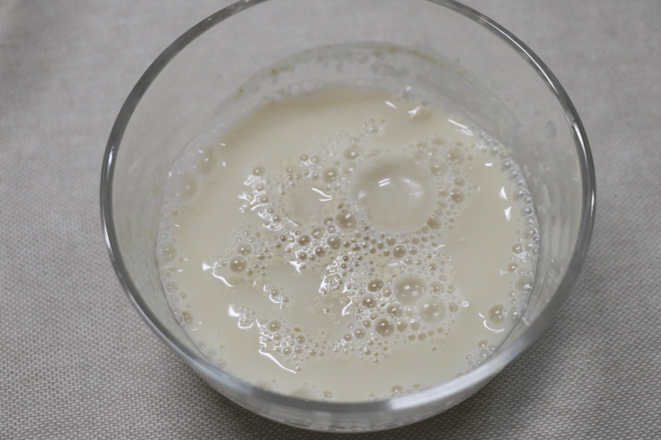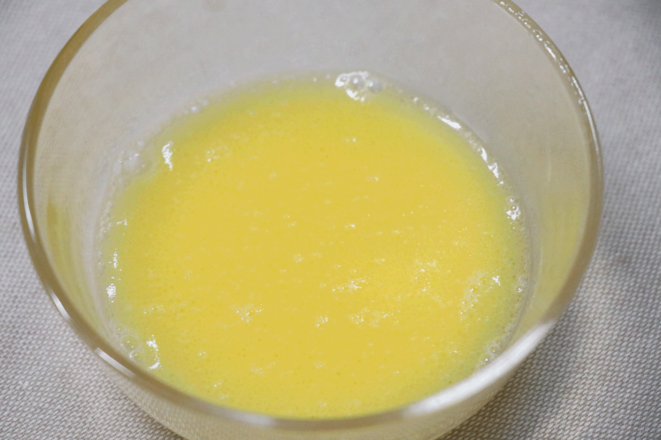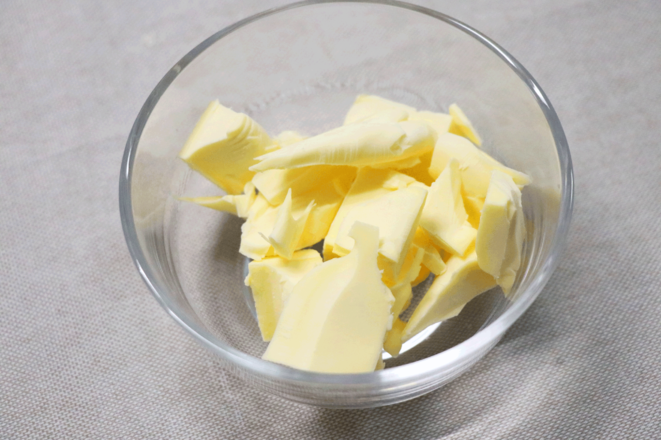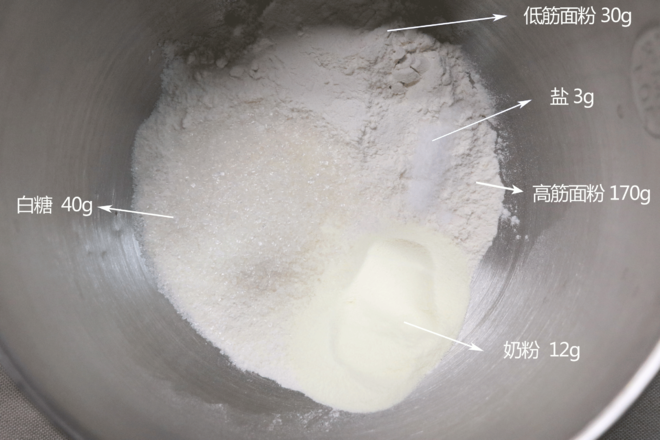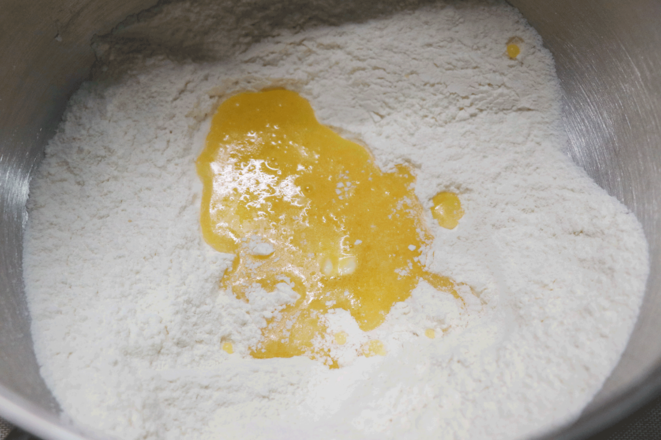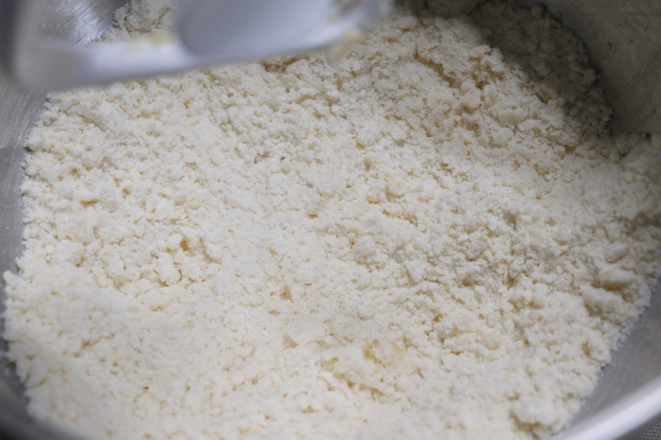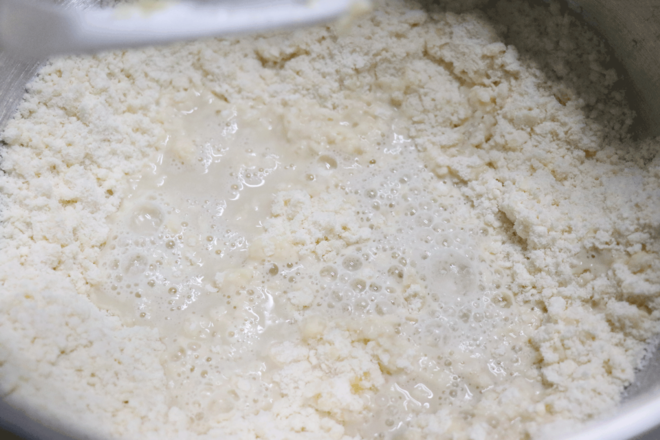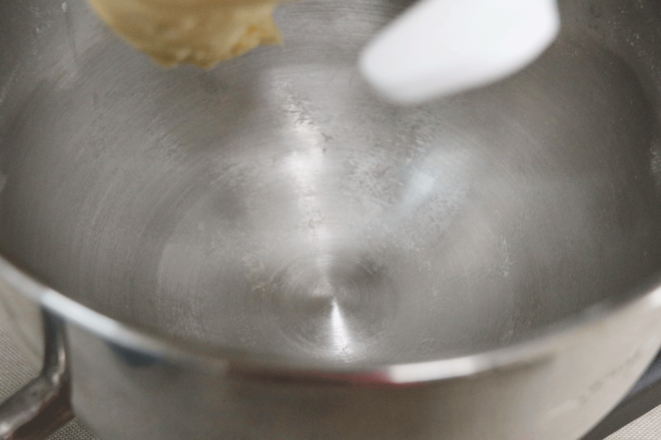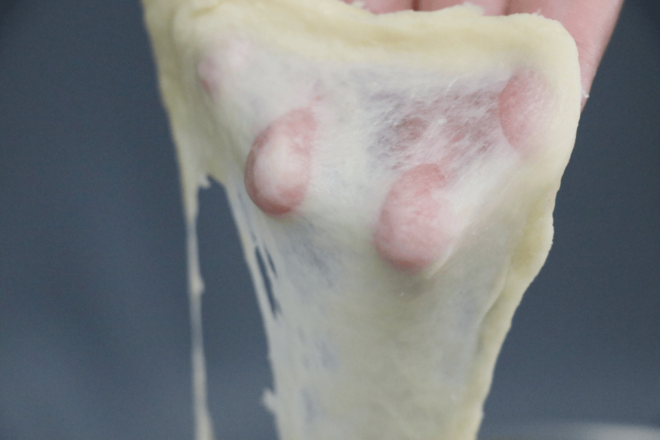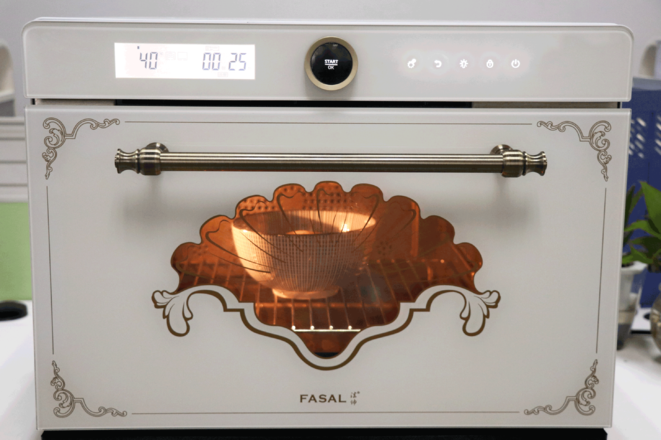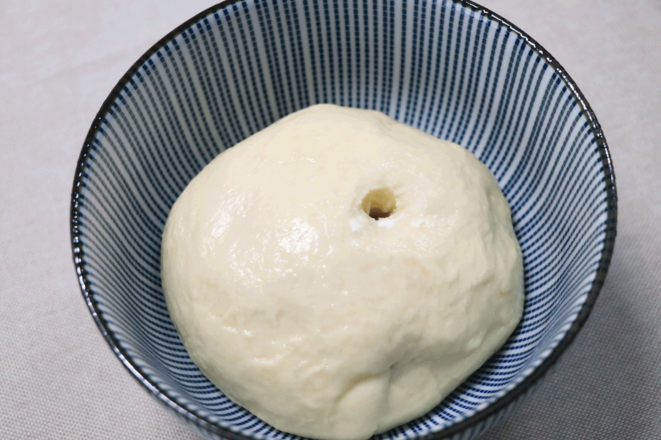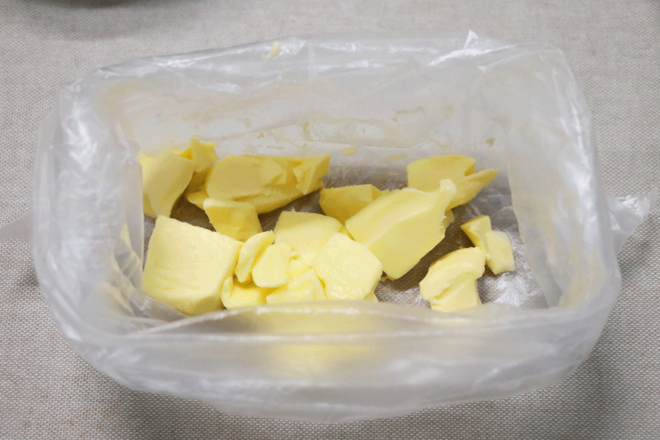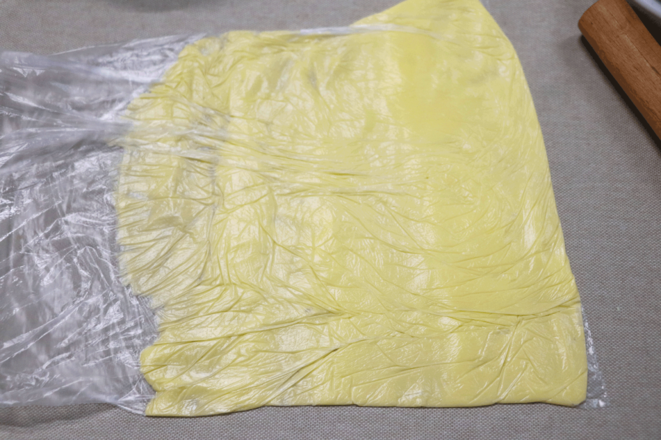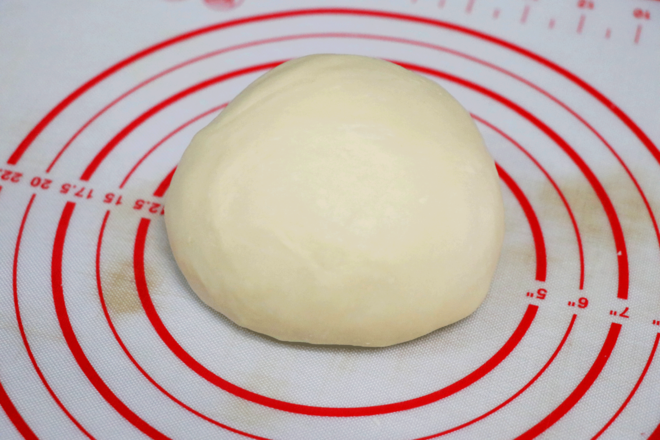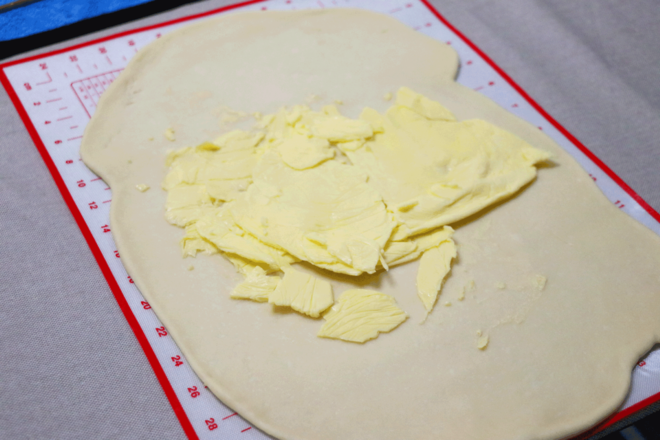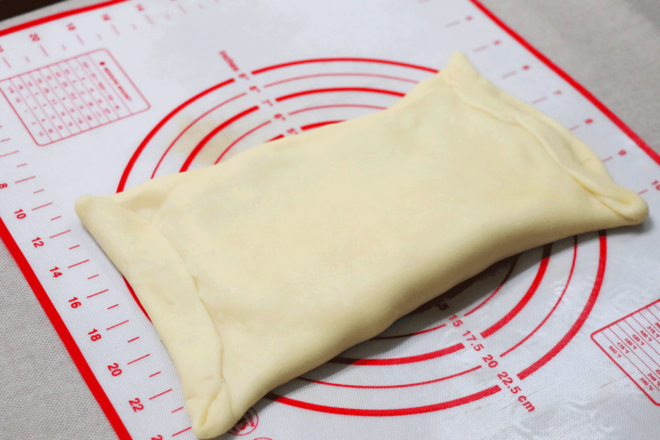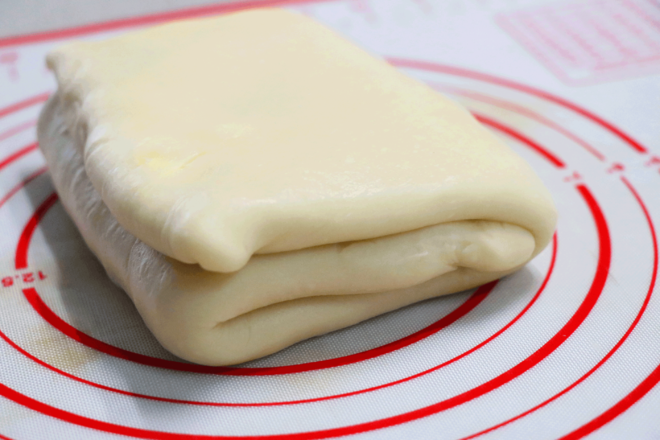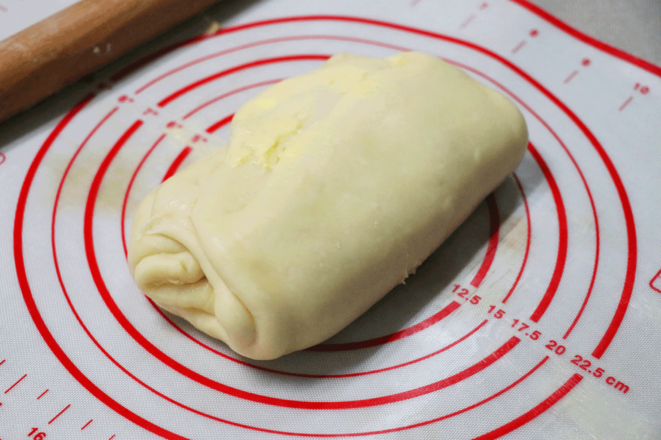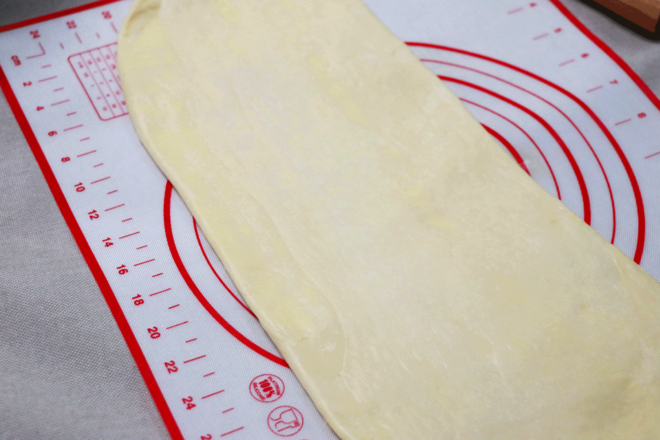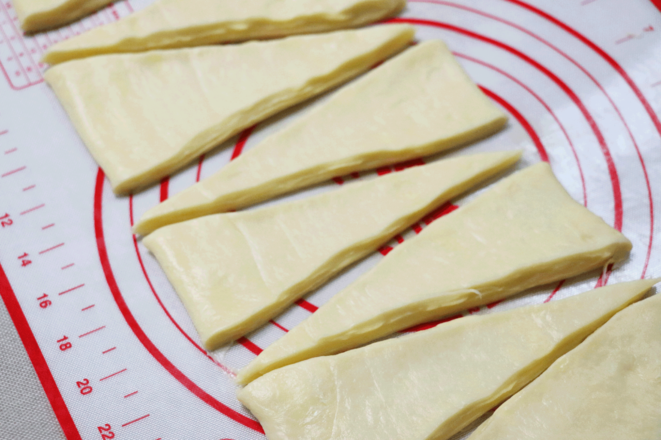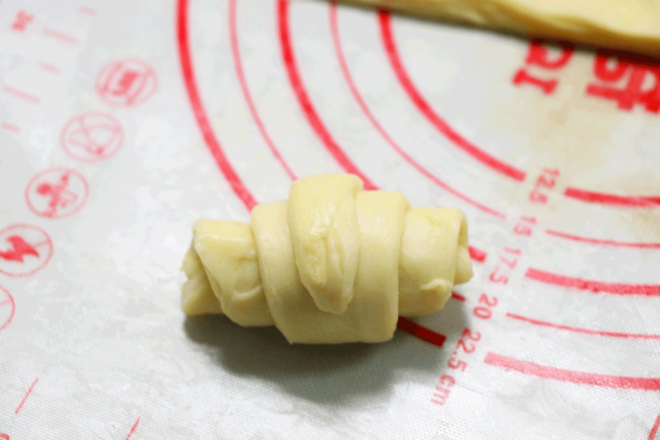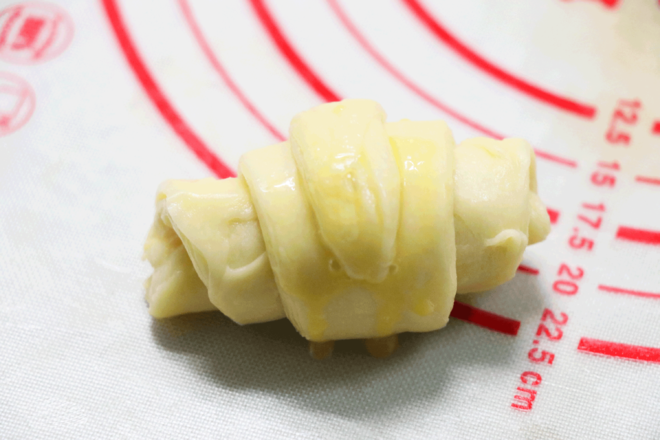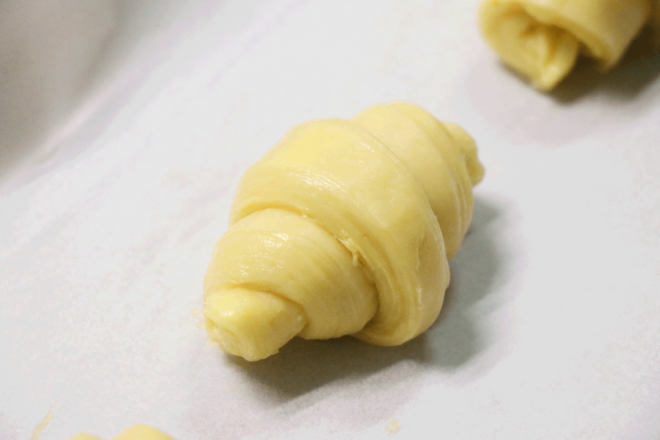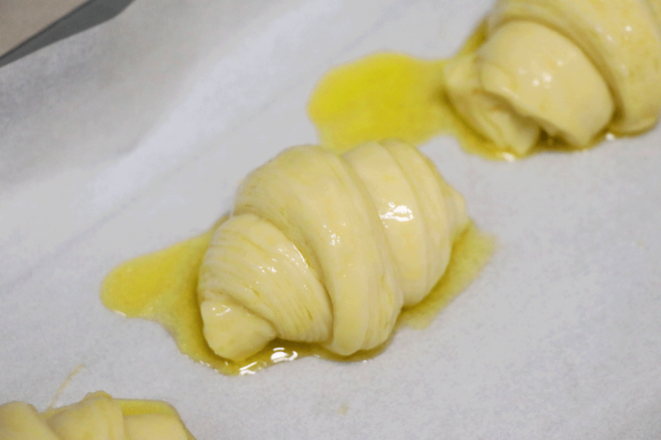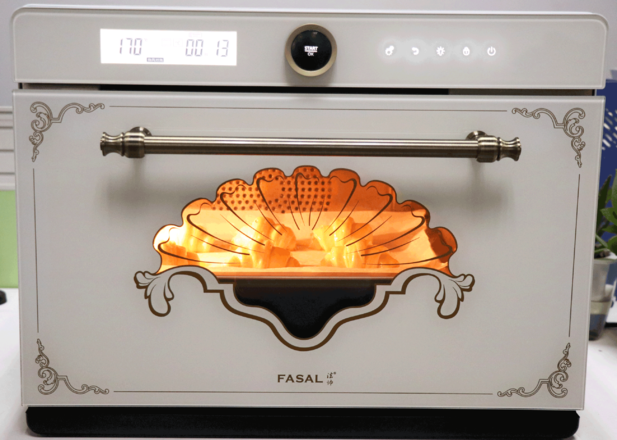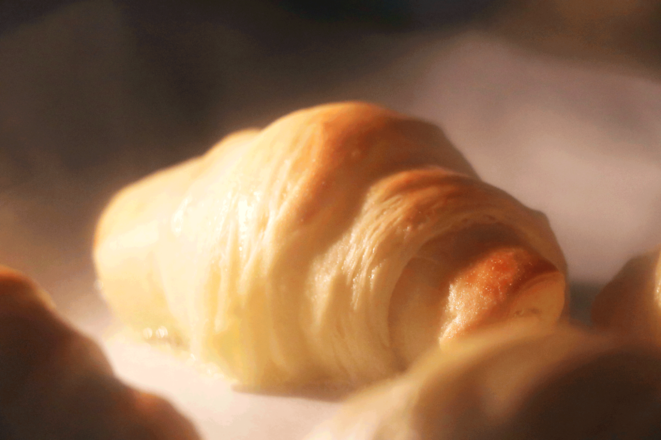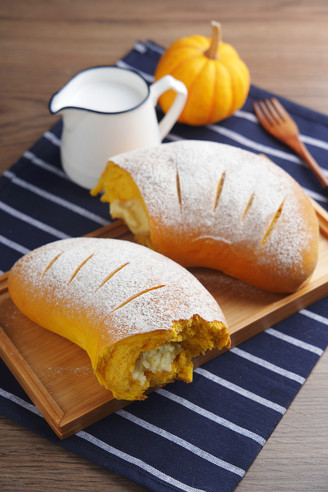Danish Croissant
1.
Pour the yeast into the water at room temperature and stir gently with chopsticks
2.
Generally the egg is about 55g, measure out 40g of egg liquid, pour in corn oil, and stir well. The rest is left to apply the surface of the croissant
3.
Cut butter into small pieces and soften at room temperature
4.
In addition to the butter, pour the remaining dry ingredients into the mixing pan and mix well
5.
Pour the egg liquid into the flour first, turn on the 2nd stop and stir evenly
6.
Stir the flour and egg liquid evenly
7.
Pour the yeast liquid into the flour, mix well, turn on the 2nd stop and mix well
8.
Stir until the bowl is light and the dough surface is smooth
9.
Cut a piece and pull it gently, and then you can probably pull out the glove membrane
10.
After the dough is kneaded, put it in the last layer of the French steam oven, select the [fermentation] mode, 40 degrees/30 minutes
11.
When the time is up, take it out, stick the flour with your fingers, and poke it down. If the hole does not rebound, the fermentation is good
12.
In the process of fermenting the dough, you can put the softened butter in the fresh-keeping bag first
13.
First squeeze the butter block, then knead it into thin slices, put it in the refrigerator and freeze, remember to freeze! !
14.
Pour the fermented dough into the food processor, stir and exhaust at 2nd gear, let the dough rise for 10 minutes
15.
Roll the dough into long pieces, preferably about 2.5 times the length of the butter piece. Take out the frozen butter piece and place it in the middle of the dough
16.
Wrap the butter in the middle of the dough, pinch the ends and seams tightly
17.
The first three-fold: roll out a long strip and fold it into three layers from both ends to the middle. Then put the dough in a fresh-keeping bag, put it in the refrigerator, and refrigerate it for 20 minutes here.
18.
The second three-fold: take it out of the refrigerator, roll it out into a long strip, fold it in three-fold, and refrigerate for 20 minutes (be careful when you roll it out, the butter will pop out at any time, but it doesn’t matter)
19.
The third three-fold: The method is the same as above, but after this time, you don’t need to put in the refrigerator, and directly roll it into a 4 mm dough.
20.
Start cutting from one end and cut off the triangle (equilateral triangle is best)
21.
Cut a small slit in the middle of the bottom, and stretch it to the left and right when it is easy to roll.
22.
The bottom is gently stretched to the left and right to roll up, and the top is in the middle of the dough
23.
Coat a small amount of egg liquid on the top and seal it
24.
Place the seal at the bottom of the pan
25.
After rolling up one by one, put it on the third layer of the oven from top to bottom for secondary fermentation. Select [Fermentation] mode, 40 degrees/30 minutes
26.
After the fermentation is complete, take out the baking tray and see that the dough has slightly expanded, the butter inside is overflowing (the butter does not need to be inverted, the dough will absorb oil during the baking process), and the surface of the dough is brushed with egg liquid. Preheat the steam oven to 170 degrees
27.
Put it in the steaming oven to the third floor from top to bottom, select [Grilling] mode, 170 degrees/13 minutes
28.
Through the lamp of the French steam oven, you can see that the croissant is expanding, and there are layers of creases, beautiful~
29.
After it’s out of the oven, let’s cool down before eating. It’s not that hot, and it tastes better.
Tips:
1. Different butters make croissants with different effects: salted butter: will make the taste richer and richer; unsalted butter: very pure creamy aroma.
2. It is time-consuming to press the square dough into a square cake, because it takes 20 minutes to relax (refrigerate) after being coated with oil, then press and fold, refrigerate and relax for 20 minutes, then press and fold, the last step is to press, this is very Laborious
3. It is painful to roll the butter in the middle of the dough, because it will be very tired! !
4. If you don't want the butter to overflow, you can actually use a low-temperature fermentation method. It takes more than 1 hour at about 28 degrees, and the whole dough feels light and fluffy. It’s another taste after roasting


